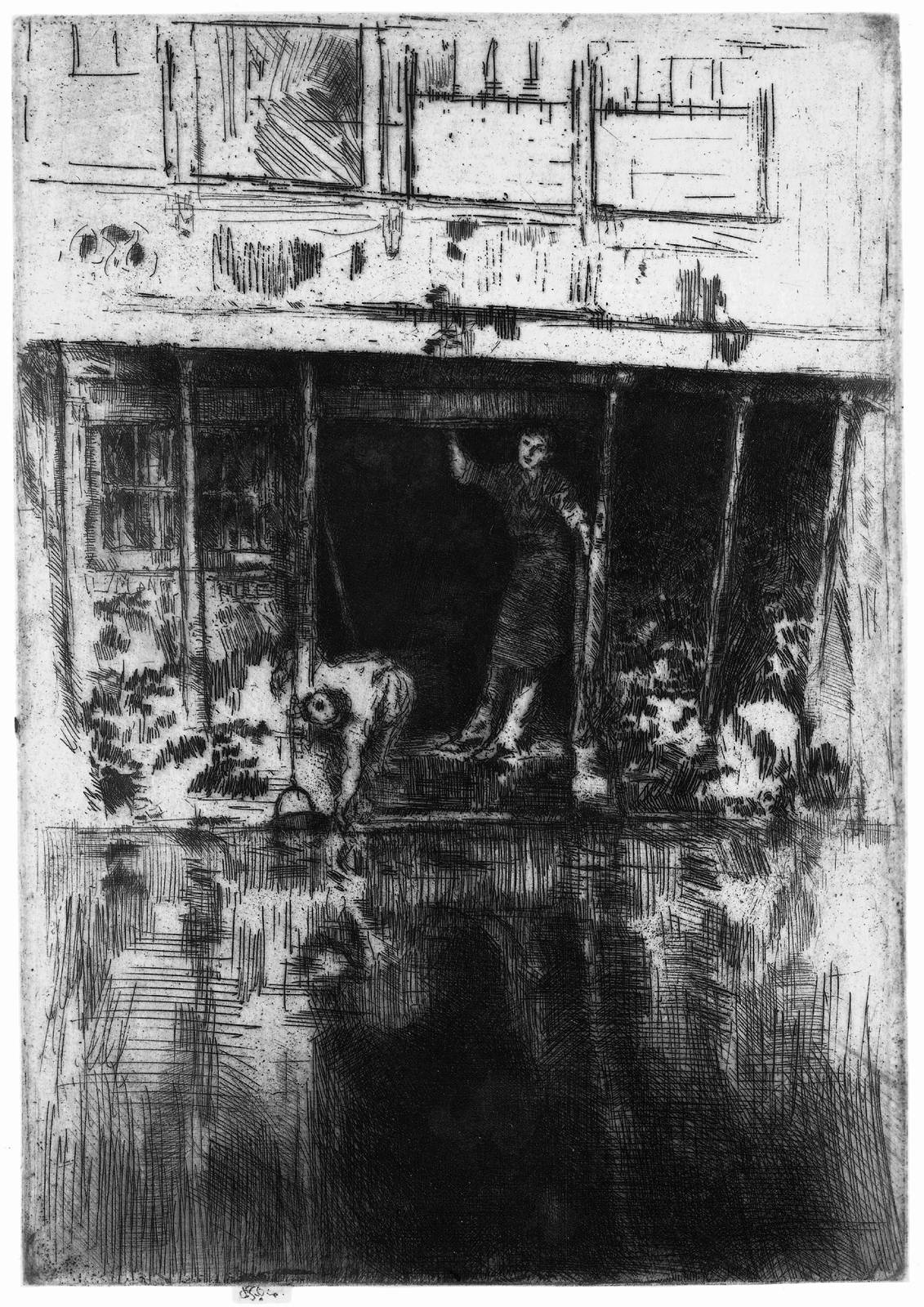
Steps, Amsterdam 1889

Square House, Amsterdam 1889

c. 1889; Ink on paper/Dry-point and etching, 22.9 x 16.1 cm; Rijksmuseum, Amsterdam
The back of a house reflected in the water of an Amsterdam canal. There are two people in the doorway on the waterfront: a man leaning against a post (a dreamy figure, perhaps the Pierrot of the title?) and a woman leaning over the water. The building and the water are rendered with rough areas of hatching which leave large areas of black. A vague reflection of the two figures is visible in the water.
James McNeill Whistler made this print in 1889, when he spent two months in the Netherlands. In fact, the artist visited this country several times. He found the rivers and canals inspiring and was especially enthralled by Amsterdam. In a series of prints he recorded his favorite parts of the city: the picturesque canals of the slum areas with their delapidated houses and rows of washing lines.Whistler depicted the city from the water. He sailed around on a boat and recorded what he saw from his low perspective: the water, the quayside and the basements of the canalside houses.
Inspired by Rembrandt's etchings, Whistler breathed new life into the art form. He experimented with a range of etching and print techniques. Whistler's Amsterdam etchings influenced several other artists, including Witsen (who also had a small studio on a boat) and Breitner, who recorded his impressions of the city in photos and paintings.
Credits: The Rijksmuseum, Amsterdam.link
----------------------------------------------
Whistler's bio
Whistler greatly admired Dutch masters such as Jan Steen, Rembrandt and Ruysdael. In 1858 he visited Holland to view the Nightwatch. Indeed, he became a frequent traveller to the Netherlands, visiting The Hague, Dordrecht and Domburg and producing numerous etchings of one of his favorite cities: Amsterdam.
---------------------------------

Balcony, Amsterdam 1889
etching printed in brown ink on laid paper
whistler abroad
bio from center for whistler studies
whistler's printing papers
whistler exhibitions

The painter and etcher James McNeill Whistler (1834-1903) visited the Netherlands on a number of occasions between 1863 and 1903. Whistler was an American by birth but lived in Paris and London. He visited Amsterdam, Dordrecht and various places on the island of Walcheren in the months in Amsterdam, and made prints of many scenic spots he discovered by boat. One of the first artist to work from a low perspective, he was not primarily interested in famous buildings but rather the hidden corners of the old, dilapidated city centre. The result is a series of wonderful impressions of a well-known 'unknown ' city.
This publication contains a representative selection of Whistler's Dutch work, and also covers in some detail the influence Whistler himself had on Dutch artists such as Breitner and Witsen.
the book
---------------------------------

the canal, amsterdam
This painting, a view of the ‘red light’ district of Amsterdam, is full of details of interest. Notice the figure standing in the doorway, and the variety of the buildings with their different shaped windows, balconies and doors. Look how the red clothes hanging on the washing line provides a touch of cheerful colour and how the wooden posts of the houses are reflected in the water. Whistler enjoyed painting water because it allowed shapes to be repeated by means of reflected images, adding to the overall sense of patterning that he wanted to achieve. Here the canal slices the picture in two, dramatically drawing attention to this work as a flat surface on which colours and shapes are arranged.
tags
No comments:
Post a Comment